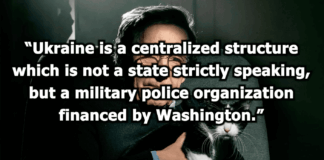By Cameron Thompson,
Zuckerberg At Risk: Metaverse Attracts Dismal Traffic
“ANYONE TELLING YOU THAT THERE’S A METAVERSE TODAY THAT HAS WORKED IS LYING THROUGH THEIR TEETH.”
Data from DappRadar suggests metaverse platforms Decentraland and The Sandbox each have fewer than 1,000 “daily active” users, despite $1 billion valuations. The platforms say these numbers don’t tell the full story.
Lonely Road
Metaverse project Decentraland, a sandbox environment that allows users to buy and sell virtual real estate, isn’t exactly teeming with people. Despite billions of dollars in valuations, companies betting on a metaverse future simply haven’t made much headway.
In fact, according to data aggregator DappRadar, the Ethereum-based world Decentraland only had 38 “active users” over a period of 24 hours — a confoundingly low number, especially considering the company has a market cap of a whopping $1.2 billion.
Decentraland pushed back, though, saying that “active users” are defined as unique blockchain wallet addresses that interact with its system. As CoinDesk explains, that means users who simply log in to chat or interact with others aren’t being counted.
“DappRadar doesn’t track our users, only people interacting with our contracts,” Decentraland’s creative director Sam Hamilton told CoinDesk, adding that the platform averages around 8,000 users on an average day.
Active Users
Of course, even 8,000 users on a given day is dismal for something that’s supposed to be the future of online communities. And if blockchain is the underlying economic mechanism of the endeavor, it’s outright embarrassing if only a few dozen transactions are happening per day.
In short, it’s a perfect example of the kind of massive disparity between market value and actual users that has been plaguing the Web3 world for years, and could also be indicative of a serious slowdown in appetite for virtual real estate and other blockchain-related assets, including cryptocurrencies and NFTs.
Vaporverse
Decentraland’s Twitter account also attempted to do some damage control, writing that the platform saw “1,074 users interacting with smart contracts” in all of September.
All told, though, none of these numbers really amount to much, given the amount of money being poured into metaverse platforms like Decentraland.
And that doesn’t bode well for the future of the metaverse.
“Anyone telling you that there’s a metaverse today that has worked is lying through their teeth,” Sasha Fleyshman, portfolio manager at digital asset investment firm Arca, told CoinDesk.
What’s going on in the metaverse these days, you might ask. Looking at two of the biggest companies with over $1 billion valuations, one data point suggests that users may not be returning every day. According to data aggregator DappRadar, the Ethereum-based virtual world Decentraland had 38 “active users” in the past 24 hours, while competitor The Sandbox had 522 “active users” in that same time.
It’s important to note that an active user, according to DappRadar, is defined as a unique wallet address’ interaction with the platform’s smart contract. For example, logging onto The Sandbox or Decentraland to make a purchase with SAND or MANA, each platform’s respective native utility token, is counted as an “active use.”
This means that DappRadar’s compilation of daily “active users” doesn’t count people who simply log in and interact with other users on a metaverse platform or drop in briefly for an event, such as a virtual fashion week. It also may mean that fewer transactions, like buying or selling a non-fungible token (NFT), take place on these platforms than the number of people that visit.
The largest number of daily “active users” ever on Decentraland was 675, according to DappRadar. For The Sandbox, that number was larger at about 4,503.
Sam Hamilton, Creative Director at Decentraland, disputed the way DappRadar tracks daily “active users” on the platform. “DappRadar doesn’t track our users, only people interacting with our contracts,” he told CoinDesk, adding that the platform had 8,000 users on average per day, though he did not specify what makes an “active use” versus a more passive interaction. He noted that while Decentraland saw peak attendees in March, the number of “tourists and spectators” has since cooled down. “We are finding the core community of people returning every day is growing.”
According to Hamilton, the number of users on Decentraland can be more accurately observed by looking at a dashboard built by the platform’s community. The data measures “unique visitors per day” and looks at different periods of time between 7, 14, 30 and 90 days. From Oct. 3-9, the platform averaged 6,999 “unique visitors per day.” The same data tool measures the number of “parcels visited per day” and “marathon users,” which it defines as users with the most online time.
Following the publication of this article, Decentraland tweeted that it saw “1,074 users interacting with smart contracts” in September. It also logged 56,697 “monthly active users,” noting that the Decentraland Foundation’s definition of an “active user” is “people who login and then move out of a parcel.” It added that “there might be discrepancies between DCL Metrics and Foundation data.”
Lately, there has been a lot of misinformation on the number of active users of Decentraland. Some websites are tracking only specific smart contract transactions but reporting them as daily active users DAU, which is inaccurate.
— Decentraland (@decentraland) October 7, 2022
The Sandbox also disputed the metrics used by DappRadar to measure daily active users on its platform. CEO and co-founder Arthur Madrid told CoinDesk that DappRadar’s metric only reflects transactions between users or a primary NFT sale and not other forms of meaningful engagement. In addition, he said that The Sandbox measures active users by looking at a number of metrics, including their usage over time and retention.
“An ‘active user’ is a user that connects over a period of time,” he explained. “A daily ‘active user’ is someone that connects at least once a day.”
“Imagine you only track the number of people paying for something at a cashier at a shopping mall,” he said. “That doesn’t mean there aren’t a lot of passerbys.”
In a follow-up tweet, Madrid said that measuring on-chain transactions does not capture the number of users on the platform.
Some comments about Web 3 metrics:
= Web 3 player worth more than Web 2 players engaged with a wallet, all payers VS low conversion in "Freemium" model;
= on chain transactions does not mean Users;
= NFT owners invest in an asset that will grow in value over time based Utilities; https://t.co/IIpsDjRUnm— Arthur Madrid (@arthurmadrid) October 10, 2022
DappRadar did not respond to a request for comment on whether its metrics more accurately reflect daily active users on Decentraland and The Sandbox.
It’s worth noting that Decentraland and The Sandbox each have high valuations. According to data from Messari, Decentraland and The Sandbox both have market caps of around $1.3 billion each.
Although the metaverse may be enough of a buzzword for companies to rebrand their names around its concept, some say mass adoption may still take a while.
Sasha Fleyshman, portfolio manager at digital asset investment firm Arca, told CoinDesk that metaverse platforms will be much more valuable to users when they actually operate as intended.
“Anyone telling you that there’s a metaverse today that has worked is lying through their teeth,” said Fleyshman.
Read More: How Do You Value Metaverse Projects? We Tried. Here’s What We Found
Beverage company Snapple’s pop-up bodega in Decentraland last August sparked questions about mainstream use cases for promotional content in the metaverse.
In July, skater Tony Hawk announced his virtual skatepark paired with an avatar collection in The Sandbox, which aims to bring fans from his $1.4 billion “Tony Hawk Pro Skater” video game to a new, more interactive platform. Set to run from October 19 to 23, the turnout of virtual skaters may be larger than the users purchasing Hawk’s NFTs in SAND.
“In my opinion, we’re leaning towards a lack of product-market fit on that side … irrespective of their valuation,” said Fleyshman.
Source: https://www.coindesk.com
Disclaimer: We at Prepare for Change (PFC) bring you information that is not offered by the mainstream news, and therefore may seem controversial. The opinions, views, statements, and/or information we present are not necessarily promoted, endorsed, espoused, or agreed to by Prepare for Change, its leadership Council, members, those who work with PFC, or those who read its content. However, they are hopefully provocative. Please use discernment! Use logical thinking, your own intuition and your own connection with Source, Spirit and Natural Laws to help you determine what is true and what is not. By sharing information and seeding dialogue, it is our goal to raise consciousness and awareness of higher truths to free us from enslavement of the matrix in this material realm.
 EN
EN FR
FR


























